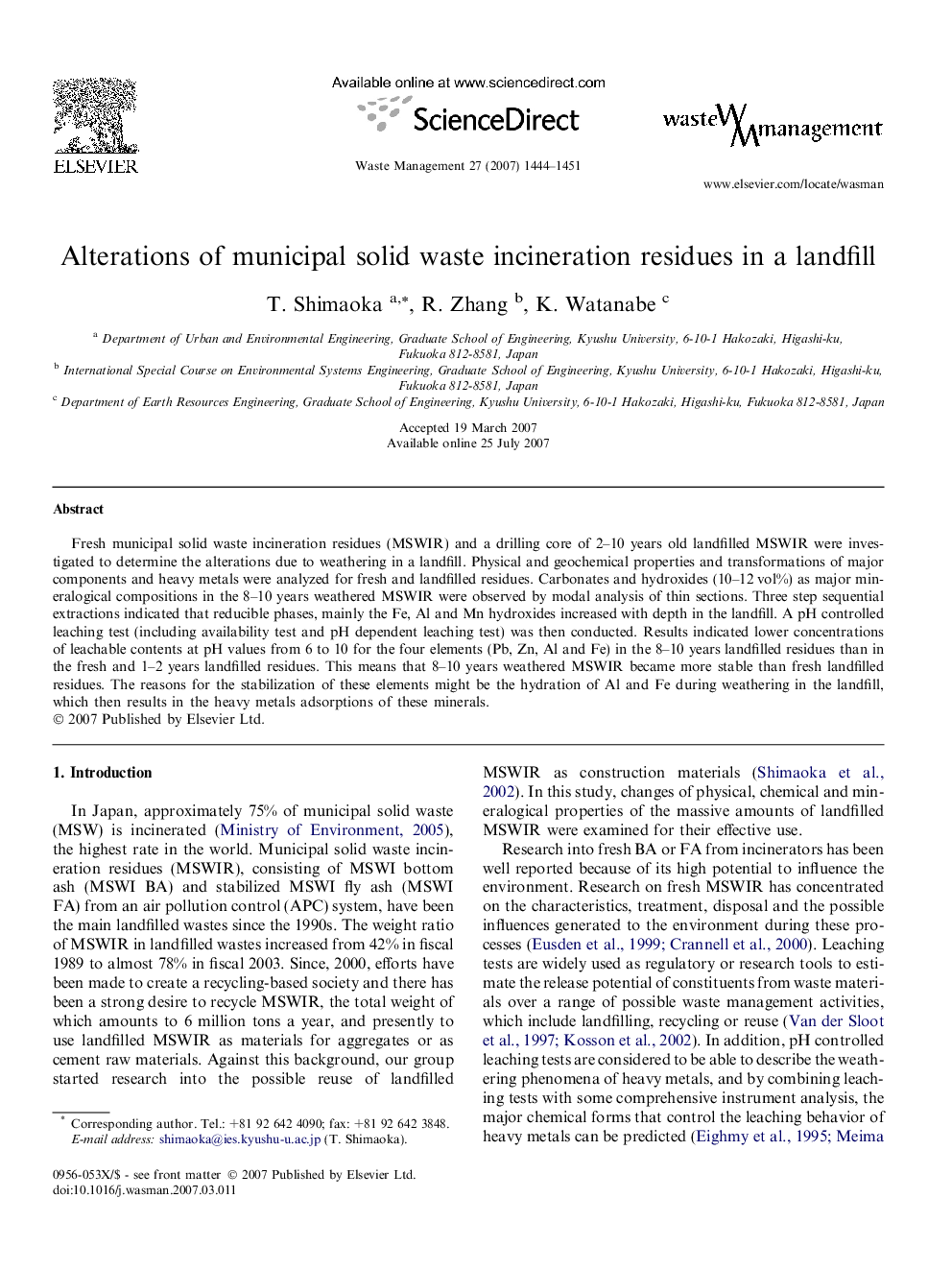| Article ID | Journal | Published Year | Pages | File Type |
|---|---|---|---|---|
| 4473453 | Waste Management | 2007 | 8 Pages |
Fresh municipal solid waste incineration residues (MSWIR) and a drilling core of 2–10 years old landfilled MSWIR were investigated to determine the alterations due to weathering in a landfill. Physical and geochemical properties and transformations of major components and heavy metals were analyzed for fresh and landfilled residues. Carbonates and hydroxides (10–12 vol%) as major mineralogical compositions in the 8–10 years weathered MSWIR were observed by modal analysis of thin sections. Three step sequential extractions indicated that reducible phases, mainly the Fe, Al and Mn hydroxides increased with depth in the landfill. A pH controlled leaching test (including availability test and pH dependent leaching test) was then conducted. Results indicated lower concentrations of leachable contents at pH values from 6 to 10 for the four elements (Pb, Zn, Al and Fe) in the 8–10 years landfilled residues than in the fresh and 1–2 years landfilled residues. This means that 8–10 years weathered MSWIR became more stable than fresh landfilled residues. The reasons for the stabilization of these elements might be the hydration of Al and Fe during weathering in the landfill, which then results in the heavy metals adsorptions of these minerals.
